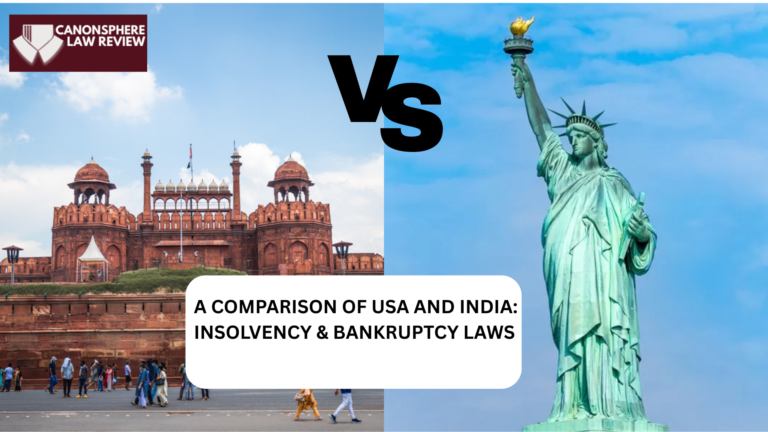This Short article has been written by Rishika Jha. She is a Law student at Amity University, Mumbai.
ABSTRACT
The frameworks for bankruptcy and insolvency in the US and India are compared in this article, with an emphasis on their respective histories, procedural distinctions, and effects on corporate settings. India’s Insolvency and Bankruptcy Code (IBC) of 2016 introduced a creditor-in-control model, where the management of a defaulting company is suspended, and a Committee of Creditors takes charge of the resolution process. In contrast, the US Chapter 11 bankruptcy system follows a debtor-in-possession approach, allowing existing management to retain control during restructuring, which generally supports business rehabilitation and continuity. While the IBC has streamlined insolvency proceedings in India and improved creditor confidence, challenges such as procedural delays, frequent amendments, and limited cross-border insolvency provisions persist. A strong legal system and well-defined procedures for international collaboration, which make it easier to recognise foreign bankruptcy cases, are advantages of the US framework. The practical impact of these variations on stakeholders, such as creditors, shareholders, and workers, are also covered in the study, with a focus on how bankruptcy laws affect market dynamics and corporate risk-taking. It further identifies shortcomings such as India’s need for enhanced judicial capacity, formal cross-border protocols, and procedural consistency, while noting that the US could improve oversight and expedite proceedings to prevent potential abuses of the debtor-in-possession model. Ultimately, the paper argues that both countries can learn from each other: India by incorporating more debtor friendly measures and strengthening international cooperation, and the US by refining procedural efficiency. This comparative study aims to provide valuable insights for policymakers, legal practitioners, and business stakeholders to foster more effective insolvency regimes that support economic growth and stability in an increasingly globalized market

